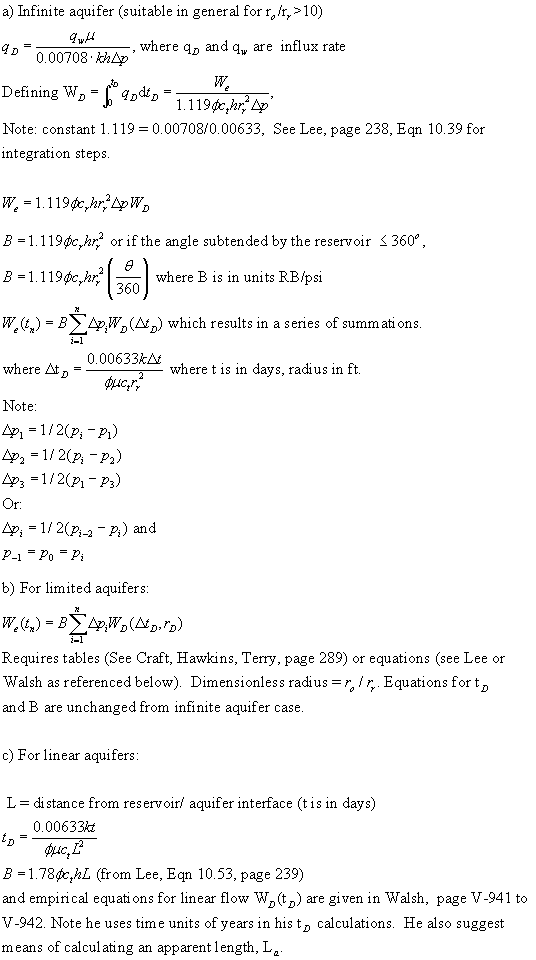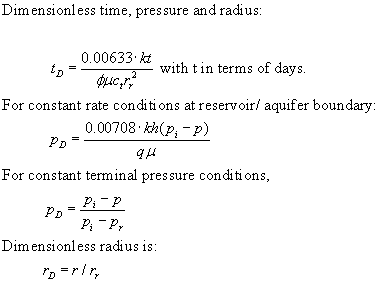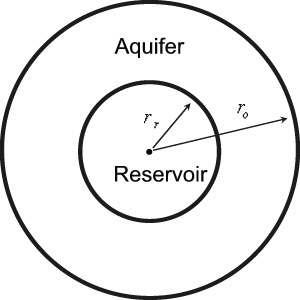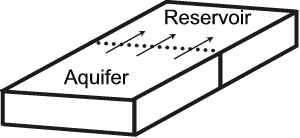Unsteady State Aquifer Representations
Introduction
Analyses of well test and aquifer pressure responses share a common theoretical basis, the diffusivity equation. Both seek to identify potentially non-unique model parameters. Unlike well testing, the aquifer analyses must work from observational data, very different from a designed test. Also, the time span is commonly in terms of several years. The representation of the aquifer may be used in calculation of original gas or oil in place, or in the forecasting of production.
The model requires assumptions or estimates of the following:
- Geometry- radial, linear, bottom water drive
- Perneability and viscosity (Transmissibility)
- Porosity and compressibility (Storativity)
The irregular shape may be accomodated by either numerical simulation or by using an apparent radius and angle which provide a reasonable equivalent shape. This is discussed in Craft and Hawkins. Similarly, for non-uniform properties, calculation of aquifer volume, and adjusting porosity may be one method. Simulation is another alternative.
We will review three Van Everdingen-Hurst unsteady state models, which are:
- VEH Infinite radial model
- VEH finite radial model
- VEH Linear model
There are other forms including the bottom water drive, which we hope to add later. Additionally, the Carter-Tracy model is used in reservoir simulation. Fetkovich method is an approximation to VEH, with the assumption of pseudo steady-state and was easier to hand calculate. However, today when material balance is done on the computer, the need for simplified solutions is less (except in the academic setting of course).
Calculation of Cumulative Water Influx (We)
|
The starting point is really the conservation of mass equation and Darcy's equation, which result in the diffusivity equation as presented below, and made dimensionless by pressure, time and radius linear transforms. .
|
 |
Linear Aquifer Model
|



